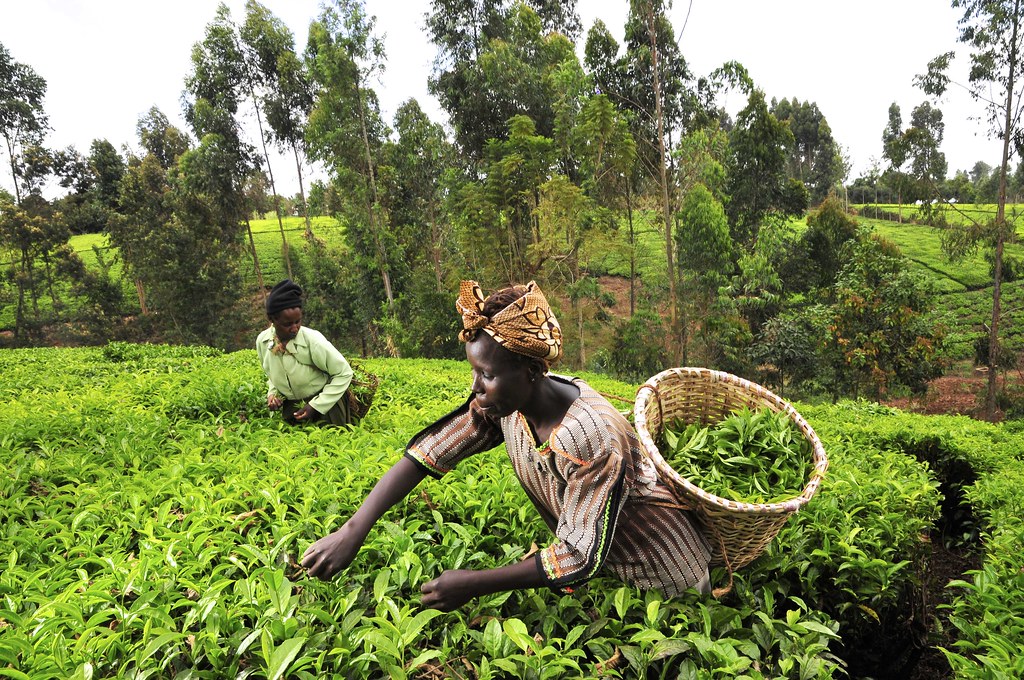AI Improves Farming With Google’s TensorFlow
 Once a far-fetched, abstract idea, artificial intelligence is now proving to be a valuable asset in solving world hunger. Although AI is still in its earlier stage of development, progress is being made by corporations and university programs such as Google and Stanford University’s Sustainability and Artificial Intelligence Lab. No longer merely science fiction, now AI improves farming, helps identify disease, predicts crop yields and locates areas prone to scarcity.
Once a far-fetched, abstract idea, artificial intelligence is now proving to be a valuable asset in solving world hunger. Although AI is still in its earlier stage of development, progress is being made by corporations and university programs such as Google and Stanford University’s Sustainability and Artificial Intelligence Lab. No longer merely science fiction, now AI improves farming, helps identify disease, predicts crop yields and locates areas prone to scarcity.
FarmView Increases Sorghum Yields
Researchers from Carnegie Mellon University created FarmView to help solve the issue of a rapidly increasing population. By 2050, over 9.8 billion people will live on the planet, making food scarcity a topic of increasing importance. Additionally, CMU wants to help current farmers grow more food using the same amount of crops. And as AI improves farming methods, CMU believes it’s a possibility.
CMU is working with plant scientists and agricultural leaders to develop and deploy a system of AI, sensing and robotics technologies to improve plant breeding and crop management. One aim is to increase yields of drought and heat resistant sorghum–a crop that can thrive in famine-stricken countries. Researchers first collect data with drones, robots and stationary sensors. Then, machine learning technologies analyze the data to determine what factors yield more sorghum.
Agricultural Improvement with Google’s TensorFlow
Another AI technology created to help the agriculture industry is PlantMD. Created by high school students Shaza Mehdi and Nile Ravanell, PlantMD is an app that allows a farmer to detect plant diseases. Mehdi and Ravanell built the app using Google’s TensorFlow, an open-source machine learning library.
Inspiration for PlantMD came from Nuru, an app built by a research team at Penn State University called PlantVillage in tandem with the International Institute of Tropical Agriculture.
Nuru was created as a solution to disease and pest susceptibility in cassava, a crop that feeds half a billion Africans daily. Because it is difficult for farmers to inspect and manage every crop, machine learning is being used to increase efficiency. First, a machine learning model was trained using thousands of classified cassava images. The model was then turned into an app where farmers can send images of their crop and receive information not only identifying diseases but also giving options to manage them. With this information, vital African agriculture can be better sustained to feed people.
Stanford University’s Research
Similar to PlantVillage and the IITA, Stanford University is utilizing machine learning in order to understand and predict crop yields in soybeans. But these models may be expanded to help underdeveloped countries.
Marshall Burke, an assistant professor of earth system science at Stanford, said: “If we have a model that works for U.S. soybeans, maybe we can train that model for areas with less data.”
Machine learning can also identify areas in underdeveloped countries suffering from food scarcity. Because these countries often lack reliable agricultural data, machine learning technology is extracting information from satellite images to discover areas where agriculture is suffering.
Solving the World’s Problems with AI
Google’s open-source TensorFlow allows machine learning technologies to be applied to agriculture. Moustapha Cisse, lead of the new Google AI center in Accra, Ghana, mentioned how farmers use TensorFlow-based apps like PlantMD and Nuru to diagnose plant diseases. Cisse said: “This wasn’t done by us but by people who use the tools we built.” Although not everyone owns a phone, it’s an excellent step in demonstrating the possibilities of AI in reducing poverty. And as AI improves farming, it brings us another step closer to reducing world hunger.
– Lucas Schmidt
Photo: Flickr
